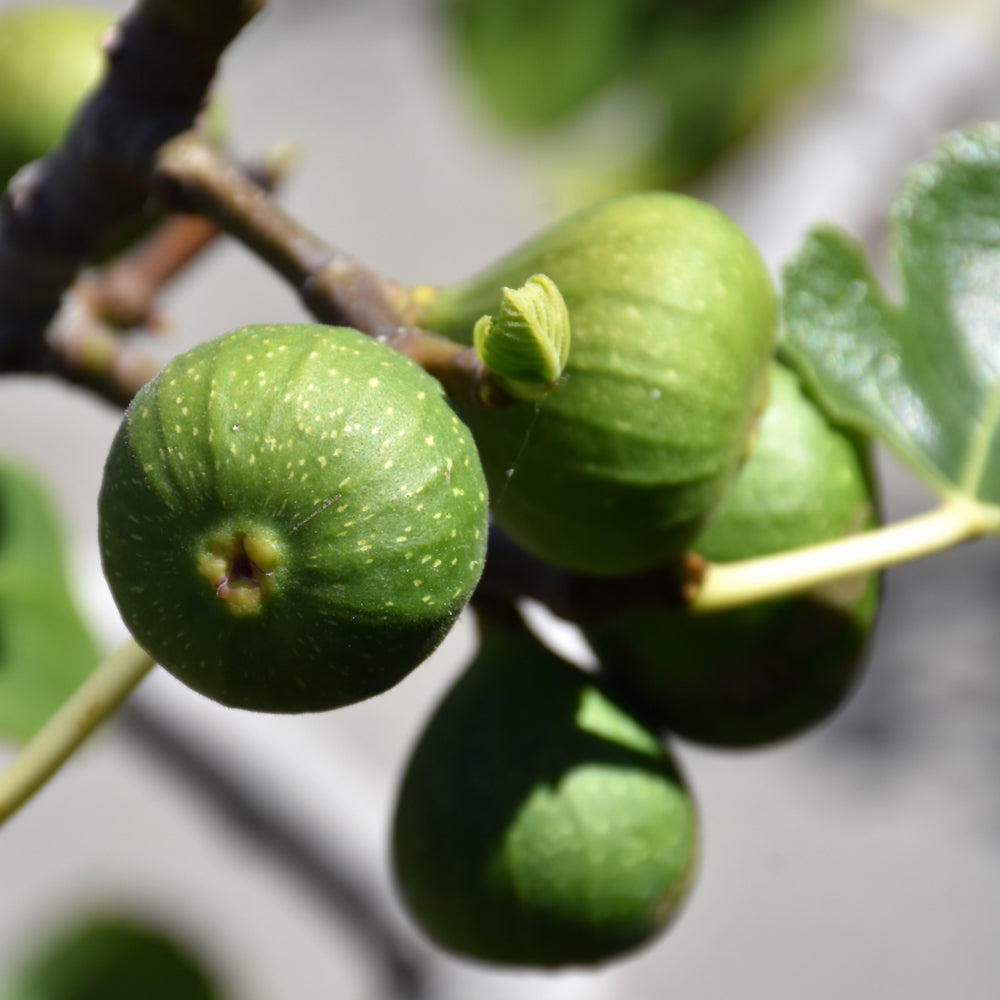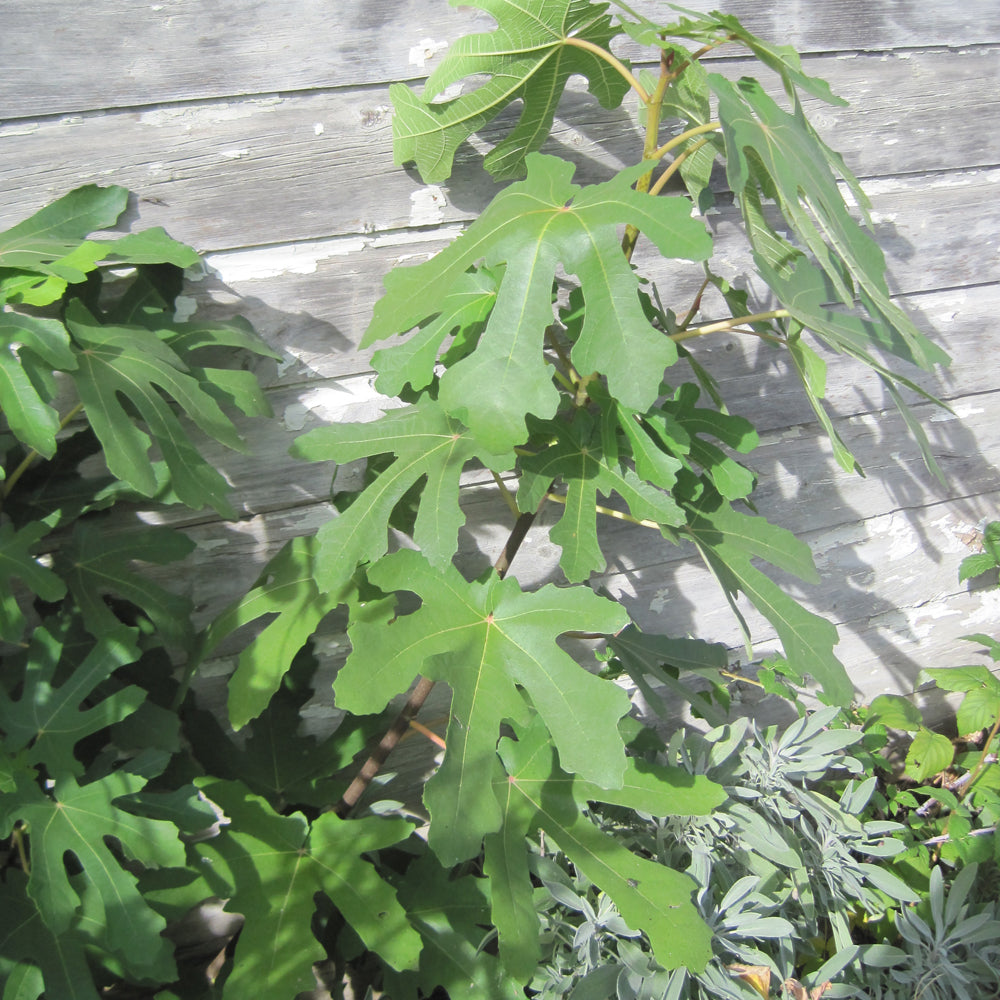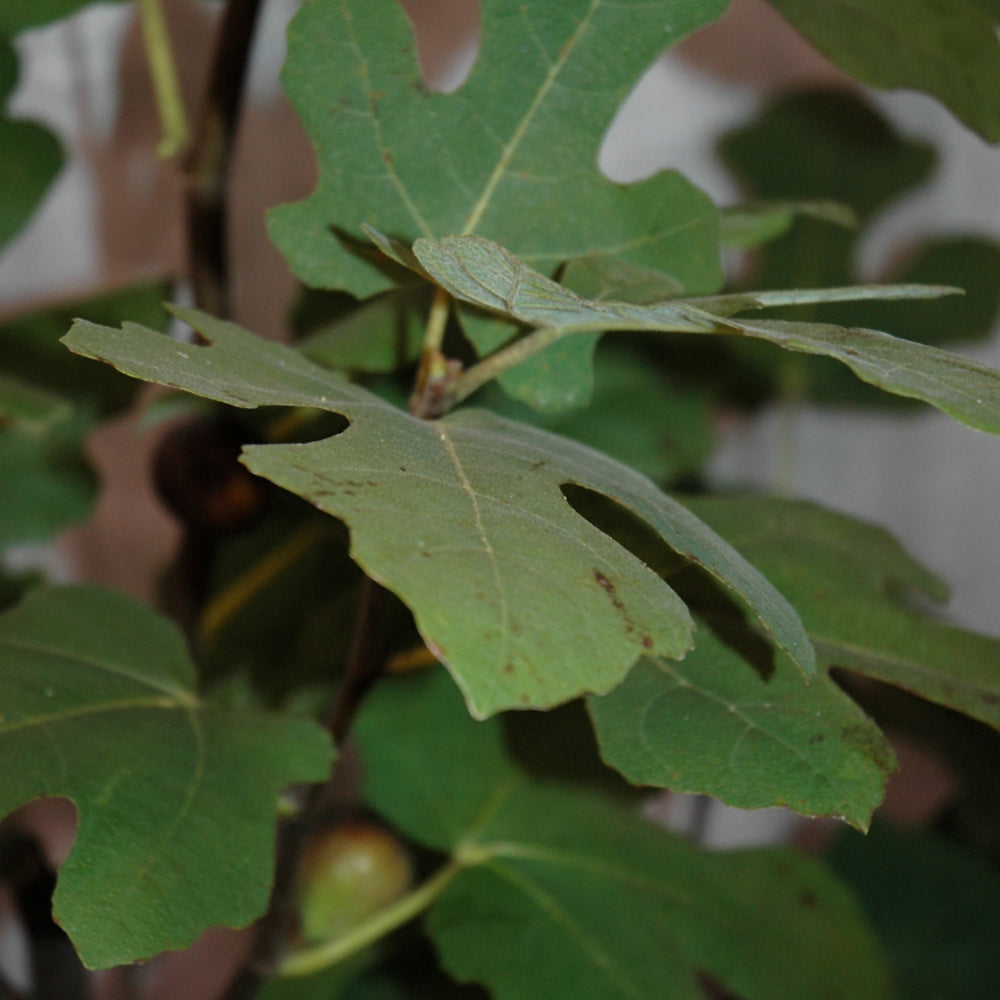Chicago Hardy Fig
Chicago Hardy Fig
|
|
Shipping for other products is calculated at checkout.
Couldn't load pickup availability
Botanic Name: Ficus carica 'Chicago Hardy'
Description: Noted for having unusually good winter hardiness, this variety can be maintained as a large shrub in cooler areas with some winter protection; sweet purplish-red fruit in fall, in clusters among interesting lobed leaves; also a great container plant
Edible Qualities
Edible Qualities
Chicago Hardy Fig is a small tree that is commonly grown for its edible qualities, although it does have ornamental merits as well. It produces plum purple fruit (technically 'pomes') which are usually ready for picking from early to mid fall. The fruits have a sweet taste.
The fruit are most often used in the following ways:
Fresh Eating, Cooking, Preserves
Planting & Growing Tips
Planting & Growing Tips
Chicago Hardy Fig will grow to be about 20 feet tall at maturity, with a spread of 20 feet. It has a low canopy with a typical clearance of 1 foot from the ground, and is suitable for planting under power lines. It grows at a medium rate, and under ideal conditions can be expected to live for 50 years or more.
This tree is quite ornamental as well as edible, and is as much at home in a landscape or flower garden as it is in a designated edibles garden. It does best in full sun to partial shade. It does best in average to evenly moist conditions, but will not tolerate standing water. It is not particular as to soil type or pH, and is able to handle environmental salt. It is highly tolerant of urban pollution and will even thrive in inner city environments. Consider applying a thick mulch around the root zone in winter to protect it in exposed locations or colder microclimates. This is a selected variety of a species not originally from North America.
Chicago Hardy Fig is a good choice for the edible garden, but it is also well-suited for use in outdoor pots and containers. Because of its height, it is often used as a 'thriller' in the 'spiller-thriller-filler' container combination; plant it near the center of the pot, surrounded by smaller plants and those that spill over the edges. It is even sizeable enough that it can be grown alone in a suitable container. Note that when grown in a container, it may not perform exactly as indicated on the tag - this is to be expected. Also note that when growing plants in outdoor containers and baskets, they may require more frequent waterings than they would in the yard or garden.
More Info...
More Info...
Hardiness Zone: 6
Sunlight: Full Sun To Partial Shade
Height: 20 feet
Spread: 20 feet
Photo Credits: NetPS Plant Finder
Share






